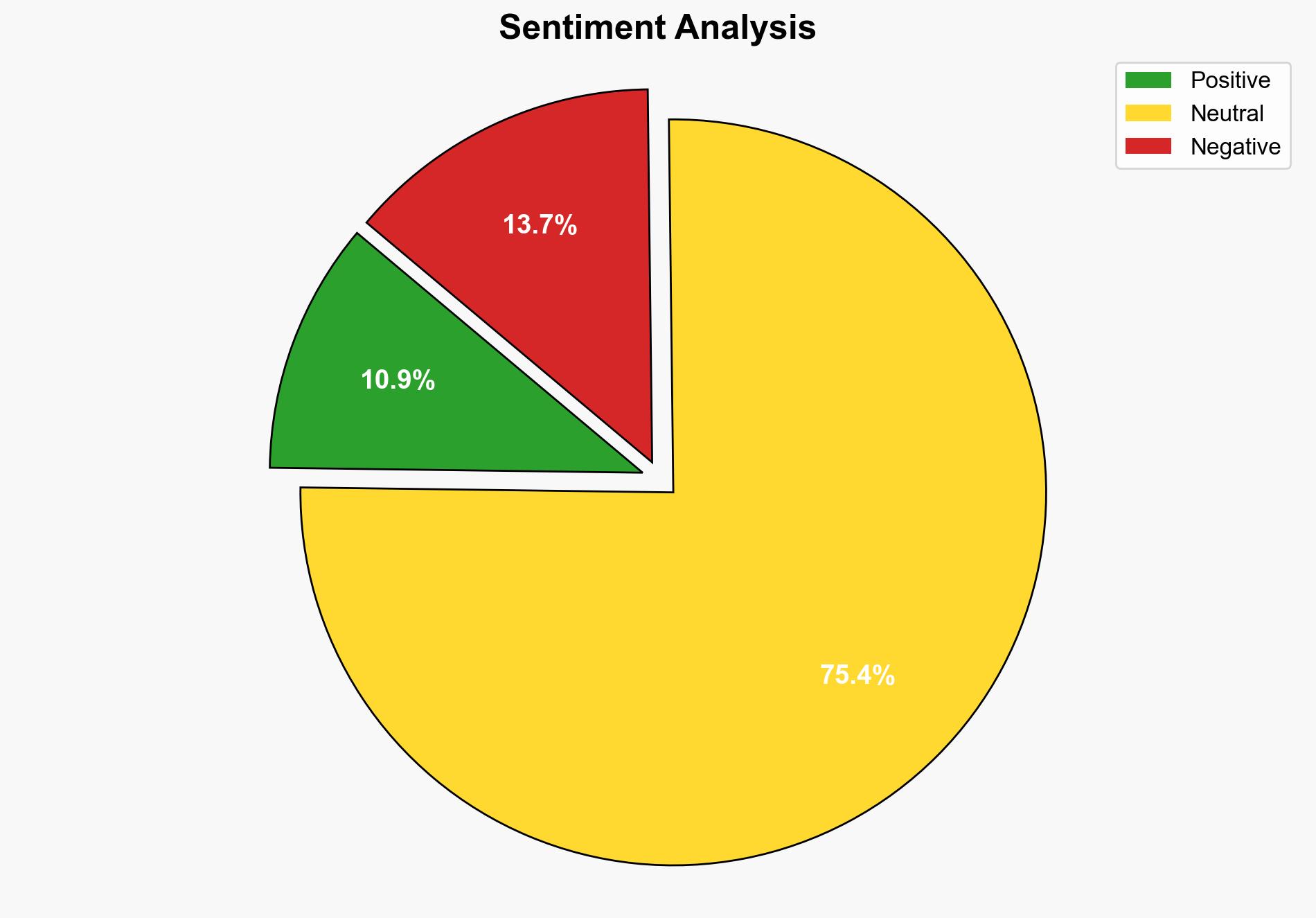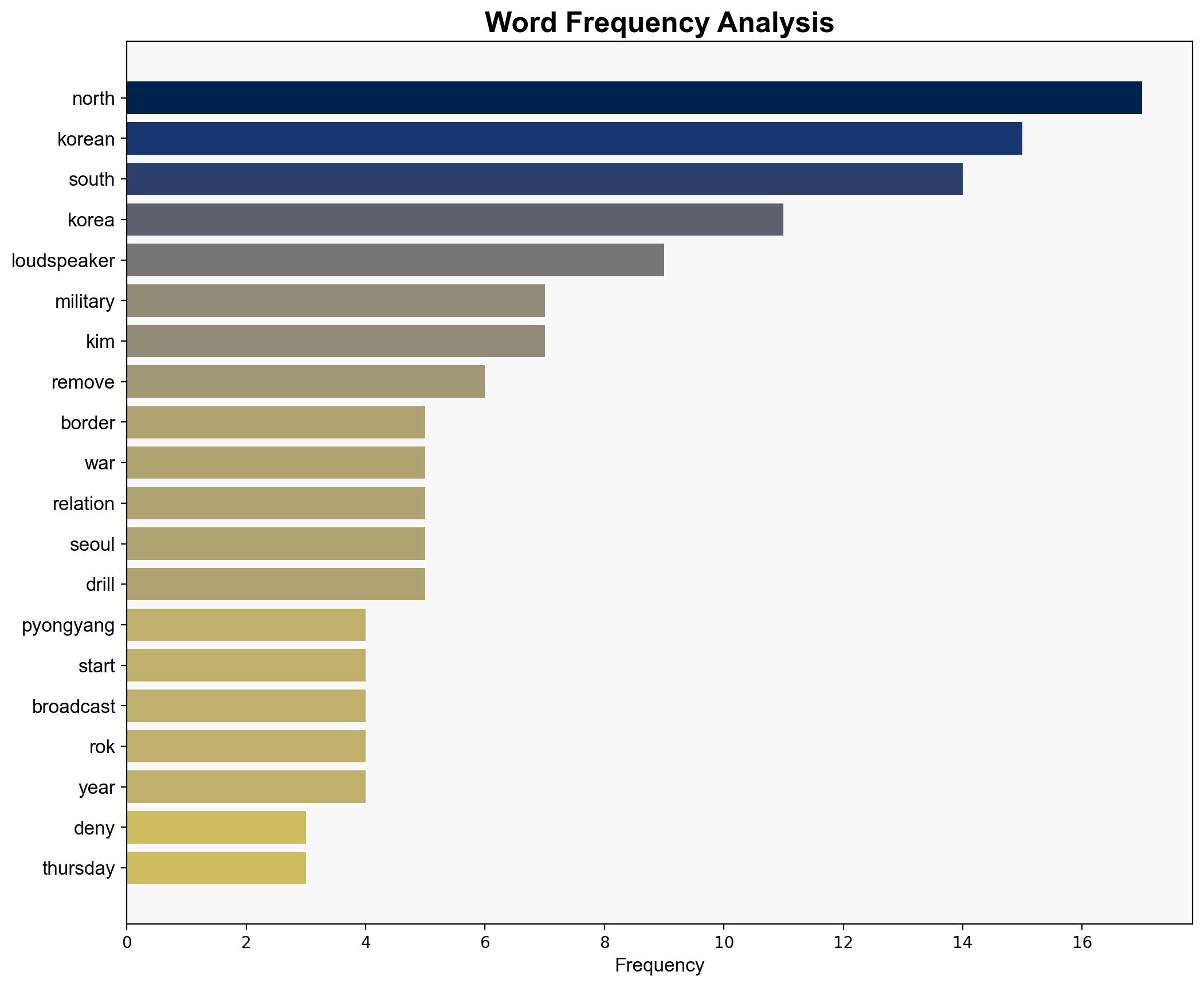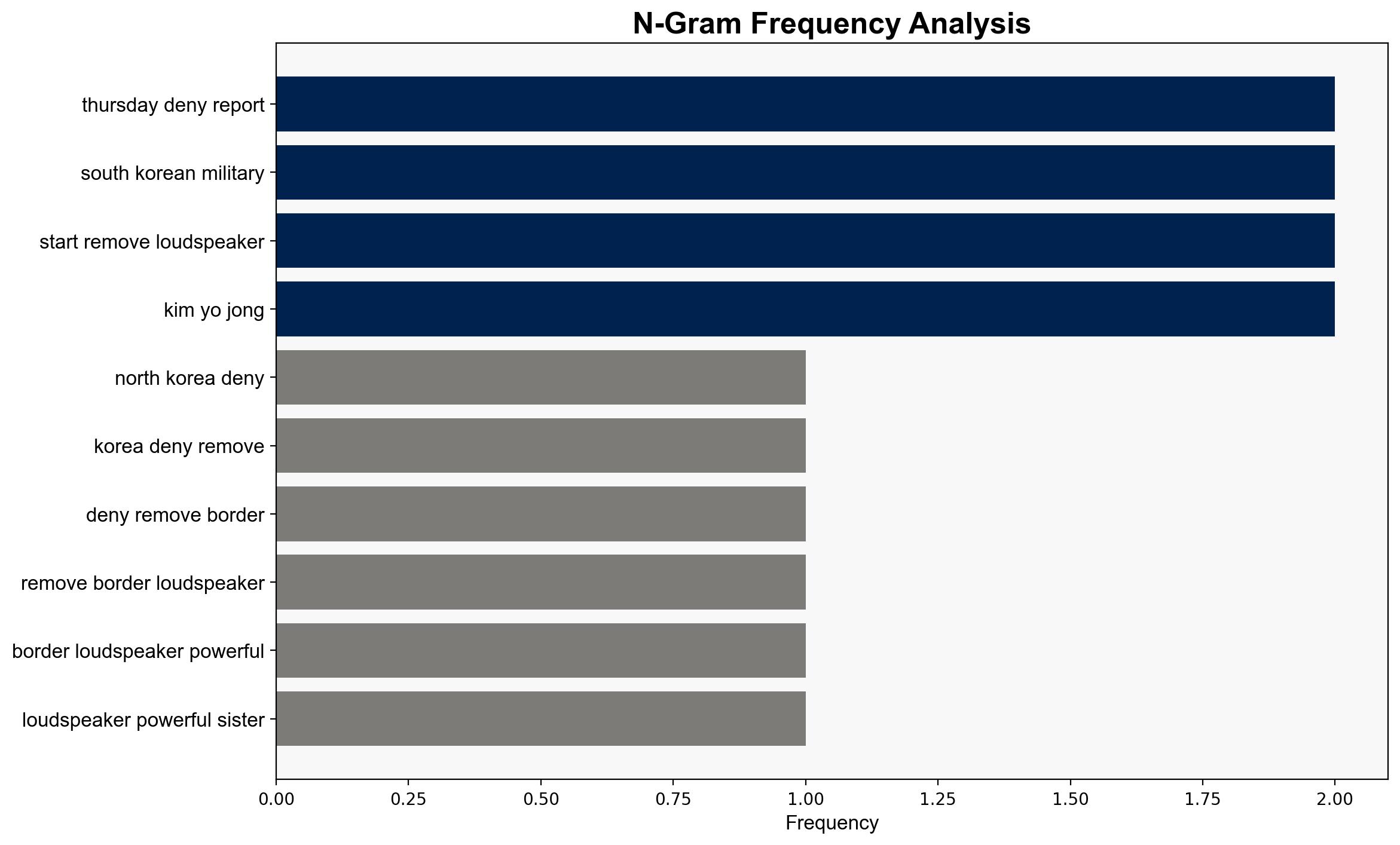North Korea Denies Removing Border Loudspeakers – International Business Times
Published on: 2025-08-14
Intelligence Report: North Korea Denies Removing Border Loudspeakers – International Business Times
1. BLUF (Bottom Line Up Front)
The most supported hypothesis is that North Korea’s denial of removing border loudspeakers is a strategic move to maintain leverage in inter-Korean relations, with a medium confidence level. The recommended action is to closely monitor military activities and diplomatic communications, while preparing for potential escalations during the upcoming joint military drills between South Korea and the United States.
2. Competing Hypotheses
1. **Hypothesis A**: North Korea genuinely has not removed the loudspeakers and is using this as a tactic to maintain psychological pressure on South Korea, leveraging the situation for future negotiations.
2. **Hypothesis B**: North Korea has removed the loudspeakers but is denying it publicly to project strength and control over the narrative, possibly to mislead South Korea and the international community about its intentions.
Using ACH 2.0, Hypothesis A is better supported due to the consistency of North Korea’s historical use of psychological tactics and the timing of the denial coinciding with upcoming military drills, which could serve as a pretext for maintaining tension.
3. Key Assumptions and Red Flags
– **Assumptions**: It is assumed that North Korea’s statements are strategically motivated rather than purely factual. The assumption that South Korea’s intelligence on loudspeaker removal is accurate is also critical.
– **Red Flags**: The lack of independent verification of the loudspeaker removal and potential cognitive bias in interpreting North Korea’s intentions based on past behavior.
– **Blind Spots**: Limited insight into internal North Korean decision-making processes and potential undisclosed diplomatic communications.
4. Implications and Strategic Risks
The denial could escalate tensions, particularly with the upcoming joint military drills. This situation may lead to increased military posturing by North Korea, including missile tests or other provocations. Economically, sustained tensions could impact regional markets and investor confidence. Geopolitically, it may strain South Korea’s relations with allies if perceived as mishandling the situation.
5. Recommendations and Outlook
- Enhance intelligence-gathering efforts to verify loudspeaker status and monitor North Korean military activities.
- Engage in backchannel communications to clarify intentions and reduce misinterpretations.
- Scenario-based projections:
- **Best Case**: North Korea agrees to dialogue, leading to de-escalation.
- **Worst Case**: North Korea conducts military provocations, increasing regional instability.
- **Most Likely**: Continued rhetorical exchanges with limited military escalation.
6. Key Individuals and Entities
– Kim Yo Jong: North Korean leader Kim Jong Un’s sister, involved in the public denial.
– Lee Jae Myung: South Korean President advocating for dialogue with North Korea.
7. Thematic Tags
national security threats, regional focus, military strategy, diplomatic relations




